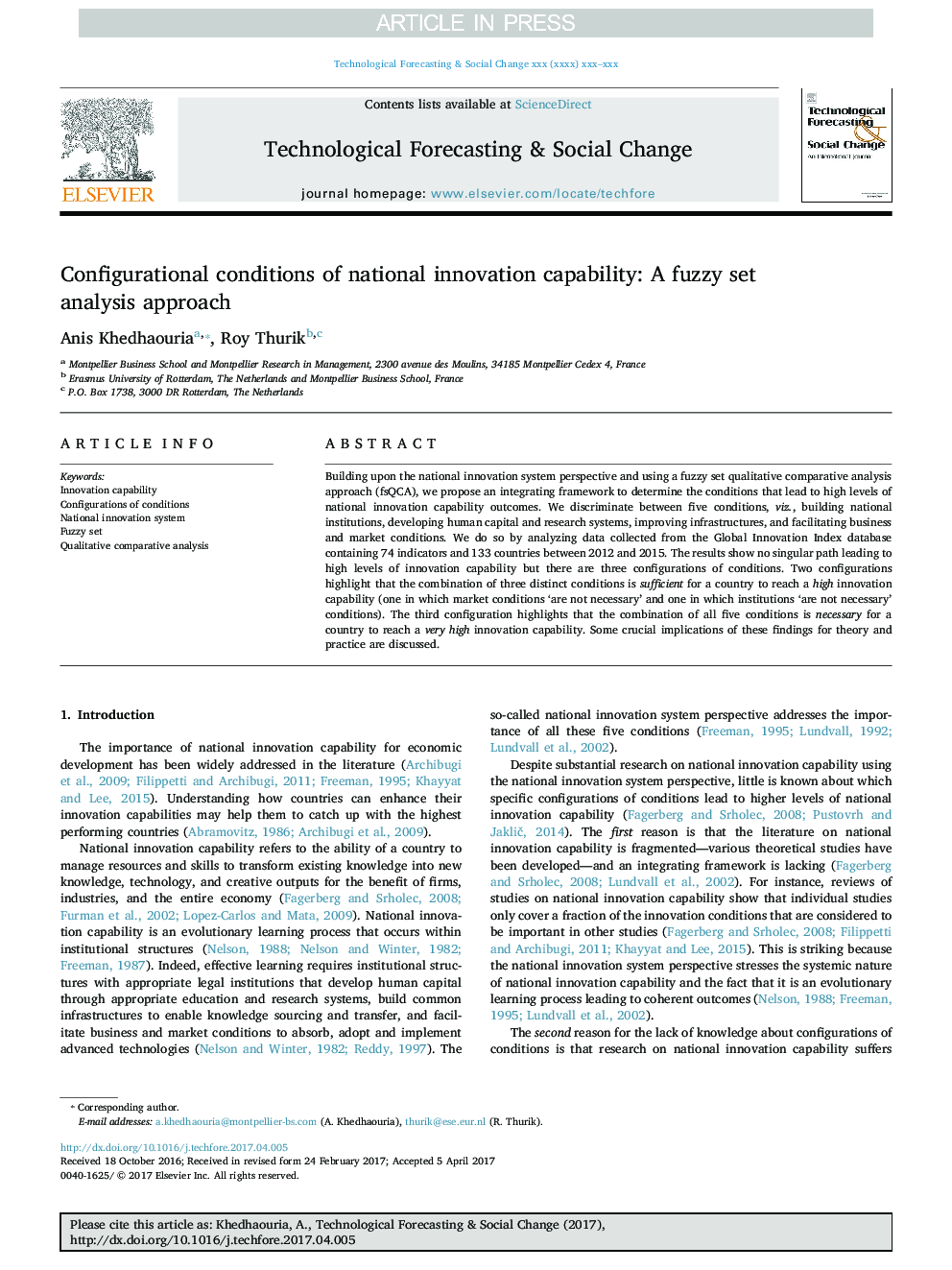| Article ID | Journal | Published Year | Pages | File Type |
|---|---|---|---|---|
| 5036769 | Technological Forecasting and Social Change | 2017 | 11 Pages |
Abstract
Building upon the national innovation system perspective and using a fuzzy set qualitative comparative analysis approach (fsQCA), we propose an integrating framework to determine the conditions that lead to high levels of national innovation capability outcomes. We discriminate between five conditions, viz., building national institutions, developing human capital and research systems, improving infrastructures, and facilitating business and market conditions. We do so by analyzing data collected from the Global Innovation Index database containing 74 indicators and 133 countries between 2012 and 2015. The results show no singular path leading to high levels of innovation capability but there are three configurations of conditions. Two configurations highlight that the combination of three distinct conditions is sufficient for a country to reach a high innovation capability (one in which market conditions 'are not necessary' and one in which institutions 'are not necessary' conditions). The third configuration highlights that the combination of all five conditions is necessary for a country to reach a very high innovation capability. Some crucial implications of these findings for theory and practice are discussed.
Related Topics
Social Sciences and Humanities
Business, Management and Accounting
Business and International Management
Authors
Anis Khedhaouria, Roy Thurik,
